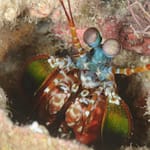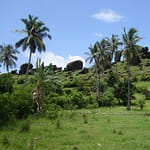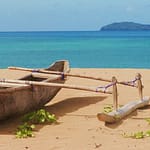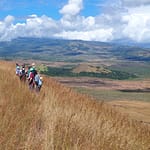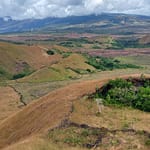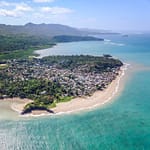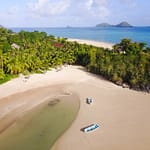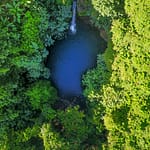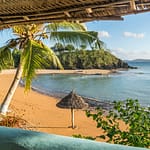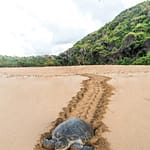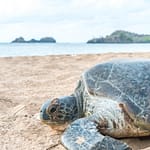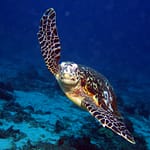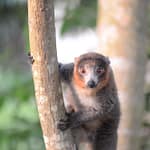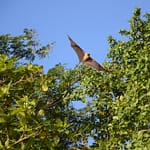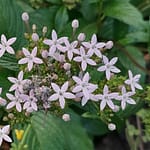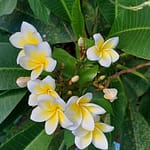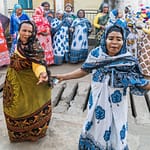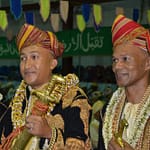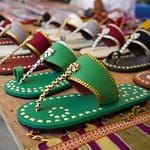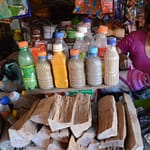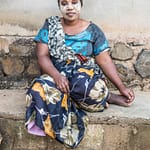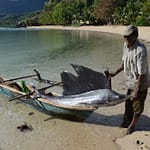What makes Comoros Unique
its amazing variety
Incredible variety
More than just a pretty beach
Paris has Chanel. The Maldives has beautiful reefs. The Caribbean had pirates and buccaneers. Tonga is known for humpback whales. Hawaii has an active volcano and lava tunnels. Zanzibar has its Arab stone town and historic medina. The Seychelles has beautiful beaches and snorkeling. Indonesia has black pepper and cloves. Transylvania has bats. The South Pacific has traditional fishermen in outrigger canoes. India has lavish weddings with colorful dancing. Madagascar has lemurs and baobabs. And Antarctica has almost no tourists.
Only Comoros has all of this and more!
The extraordinary variety of authentic natural and cultural sites, activities, and experiences found within this tiny island nation is truly fascinating. Hikers can spend weeks exploring not just Mt. Karthala, but many other beautiful treks on all three islands. Scuba divers can dive a different site every day for a month (and be the only ones in the water for miles around). Snorkelers can spend days exploring the coral gardens of Mohéli National Park. And culture enthusiasts who attend a “grand mariage” can be part of a different ceremony every day for a week. And for those who want to experience it all, you can fill up 10 days in Comoros with such a variety of experiences that you will feel like you have explored a whole new world!
Mount Karthala
Every climb is worth it
One of the largest active volcanoes in the world, Mount Karthala dominates the skyline of Grande Comore. The shield volcano rises 2,361 m above sea level and the main crater, which is 4 km wide, is one of the largest of any active volcano in the world. For visitors looking for an adventurous touch to their visit, hiking on the flanks or to the summit of the volcano is one of the must-do activities. Much of the upper slopes of Karthala have been designated a National Park and it is home to a wide variety of unique species of birds and plants found nowhere else. While the mountain can be climbed in one long day, it is recommended to spread the trek over two days to appreciate its beauty and enjoy camping near the summit. From the top, you will be granted with a unique and spectacular view of Grande Comore, Mohéli, Anjouan, and the deep blue expanse of the Indian Ocean.
Mohéli
A UNESCO Biosphere of global importance
In 2001, the splendor and importance of the marine ecosystem around Mohéli was recognized with the creation of the 400 km2 Mohéli Marine Park. This region is home to the second highest levels of marine biodiversity in the world and its pristine waters, thriving coral reefs, and variety of marine life are breathtaking. Snorkelers and divers can experience unique encounters with manta rays, dolphins, reef sharks, sea turtles, large schools of curious fish, and colorful coral gardens. Between August and October, the waters around Mohéli are teeming with humpback whales who come to frolic in the warm, protected waters and give birth to their calves. In 2015 the forests of the southern slopes of the island were added to the marine park to create the Mohéli National Park. These forests are home to the critically endangered mongoose lemur as well as Livingstone’s Flying Fox, one of the largest fruit bats in the world. In 2019, Mohéli’s ecological significance was recognized on the world stage when the entire island was designated a UNESCO Biosphere. With less than 1200 visitors per year, Mohéli remains a pristine example of tropical island biodiversity waiting to be explored.
Itsamia
One of the finest green turtle nesting sites in the world
Come and live an unforgettable experience with green sea turtles on the beaches of Itsamia. The isolated beaches of this small village on the island of Mohéli are the perfect place to observe the life cycle of these gentle giants. Every year more than 20,000 green turtles nest on these beaches. Year after year they return to the same beach where they hatched to lay 100 golf ball-size eggs to start the cycle anew. As one of the highest density nesting sites in the world, Itsamia is unique in that there are turtles nesting almost every single night of the year. From watching the mothers dig down deep to lay their precious eggs, to cheering on the baby sea turtles as they emerge from their nests and run down to the sea, you will be privileged to participate in one of the most moving experiences of your life.
Fauna and flora
An exceptional biodiversity
The rich, volcanic soil of the Comoros archipelago harbors a remarkable array of biodiversity and ecosystems. Its fauna and flora include more than 500 marine and terrestrial species, including endemic, threatened, and migratory species such as sea turtles, whales, dolphins, dugongs, lemurs, and Livingstone’s fruit bat. The Comoros is also home to the Coelacanth, an extremely rare species of fish thought to have been long extinct until it was rediscovered 80 years ago. Lush forests, mangrove forests, and coral reefs are the natural habitats of numerous species of wildlife. With its rich volcanic soil, the flora is profuse with approximately 1,000 native plant species, 30 percent of which are endemic to the Comoros.
Culture and traditions
A small country with a rich and vibrant culture
Comoros may be one of the smallest countries in the world, but it has a rich cultural diversity, with its warm and friendly people tracing their origins back to many civilizations. Arab, African, Malay-Indonesian, Indian, Malagasy and French influences can be found in its rich and diverse culture and traditions. The cuisine, language, clothing, music, ceremonial events, and architecture are unique and inspiring. Each island of the archipelago has its own expression of this cultural diversity, adding to the beauty and uniqueness of the Comorian culture. The most iconic representation of Comorian culture is the “grand mariage.” This event marks an important step in a couple’s advancement in the society and a different ceremony will be held each day for the best part of a week. Gold, food, dancing, music, and incense: being part of a “grand mariage” is a festival for the senses.
Authentic Discovery
The real deal, not a tourist trap
The fact that Comoros remains undiscovered is a great opportunity for travelers to experience the culture as it really is, not as something which has been adapted and oriented towards tourism. In 2018, there were less than 6,000 tourist arrivals in the country (not counting visiting Comorians who have emigrated to France), which is an average of 15 people per day. Less than 1,200 travelers found their way to Mohéli, and even fewer to Anjouan, meaning that throughout your visit you will be immersed in Comorian life, not throngs of tourists. Fewer tourists means that the culture remains open and friendly. More than one visitor has been surprised to meet a Comorian on the street and be enthusiastically invited to take part as an honored guest in a wedding ceremony. Without a tourist-centered economy there is no one pushing tours or selling trinkets; in fact, your biggest challenge may be trying to find a souvenir to buy. A final benefit of Comoros’ traditional and tranquil culture is the sense of safety. Violent crime is very rare and never directed at foreigners. The entire country is peaceful, open, and waiting to be explored.


